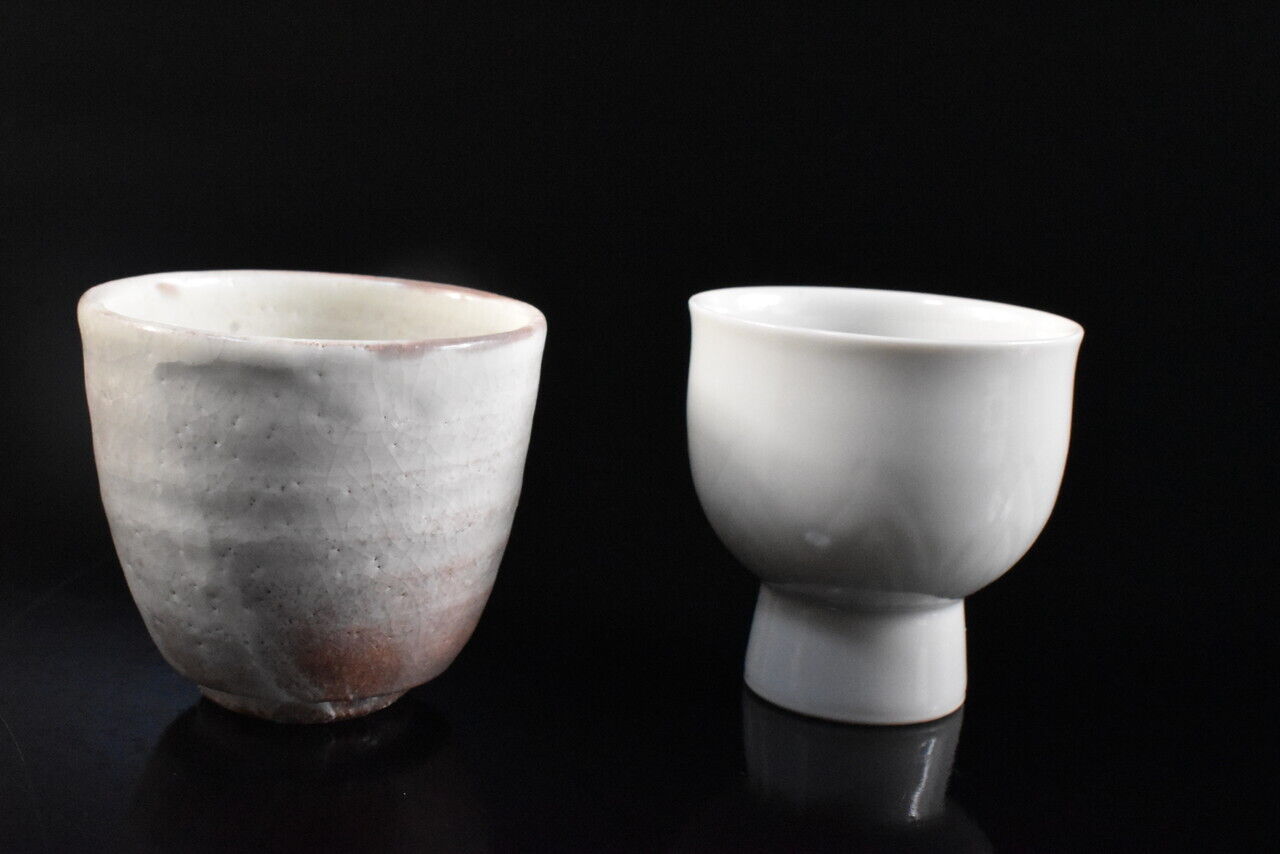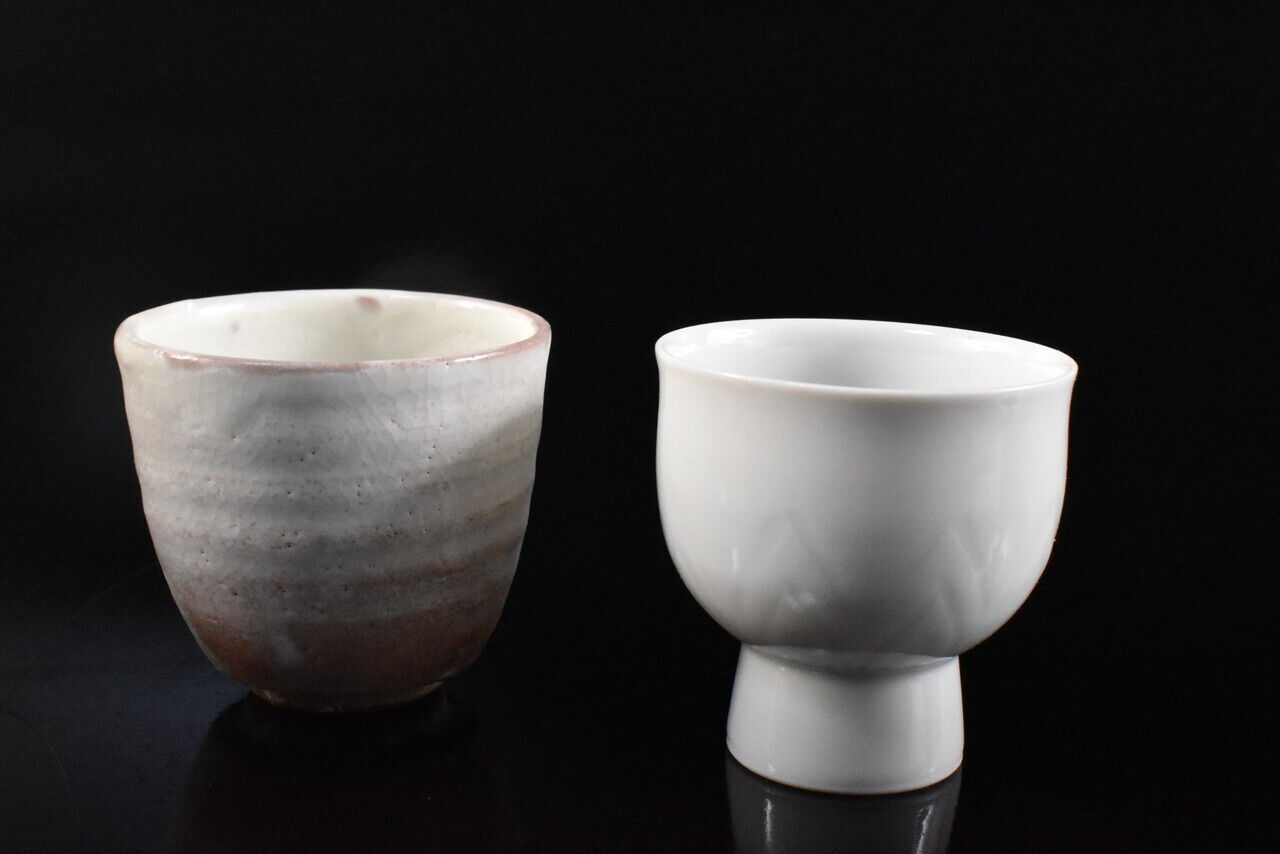





Potter: Zenko Yasuda, Masahiro
Approximate size large yunomi: W2.3″ by H2.1″ or 5.8 by 5.3 cm
A set of 2 Kyo ware guinomi or saké cups by famous potter Zenko Yasuda (1926-2011). While the one on the right in the image above is made from porcelain, the other one is earthenware (made of clay). Zenko Yasuda, who’s real name was Masahiro Yasuda was born in Kyoto in 1926. He studied at the Kyoto Craft & Fabric University, specializing in the making and building of kilns. Afterwards he studied pottery under the 6th Kiyomizu Rokubei (1901-1980). After going independent he build a kiln called Rokushin No Kama in Kyoto. Zenko Yasuda created unique and distinctive stoneware using complex glazing techniques. He passed in 2011 at the age of 86.
Zenko Yasuda (1926-2011), Studied under Kiyomizu Rokubei VI. First displayed nationally at the Nitten in 1950. He was awarded the prestigious Japan Ceramic Society Award in 1958 and was subsequently collected by the Metropolitan Museum of New York in 1963. Awarded at the Nitten in 1964 followed by the National Modern Crafts Exhibition in 1967 and collected by Japanese Government in 1971 (Gaimusho). A Private Exhibition of the artists work was held in San Francisco in 1978, a rarity for a Japanese artist at that time.

In 1958 Zenko Yasuda was awarded the Japanese Ceramic Society Prize and since has regularly been included in the Nitten. Later he served at the Nitten Exhibition as a member of the jury. His work was acquired by Metropolitan Museum of Art in New York in 1964 and the Museum of Modern Art in Shiga prefecture boasts no less than 10 works in their collection. A highly regarded 20th century Japanese potter.
Both guinomi are stamped on the bottom, the porcelain cup bears his stamp inside the high koudai or foot-ring and the other one is stamped on the side of the cup. This set is unused and condition is mint – no chips or cracks to mention.
The pair comes accompanied by the original, quality paulownia tomobako or storage box with calligraphy and the potter’s seal on the lid. Additionally includes a pamphlet with additional information about the potter and dedicated tomonunu or tea cloth for both.
€250 + shipping cost


Those interested can follow this link to see an overview of award winning works at the 2001 exhibition held by the Japan Ceramic Society (Nihon Toji Kyokai). Amongst the winners were Living National Treasures, Intangible Cultural Treasures – simply some of the greatest and most famous artists including our subject potter Zenko Yasuda.
Kyo yaki or Kyo ware refers to a style of ceramics that spread from the Higashiyama area in Kyoto during the early Edo period of the Tokugawa rule (henceforth this family line continually ruled Japan for more than 250 years). It was around this time that the art of Chanoyu or the Tea ceremony became popular and widespread in Japan. By contrast, the pottery produced along Gojo-zaka, a street leading to Kiyomizu Temple, was called Kiyomizu yaki. Nowadays all pottery produced in Kyoto is commonly referred to as Kyo or Kiyomizu ware.
